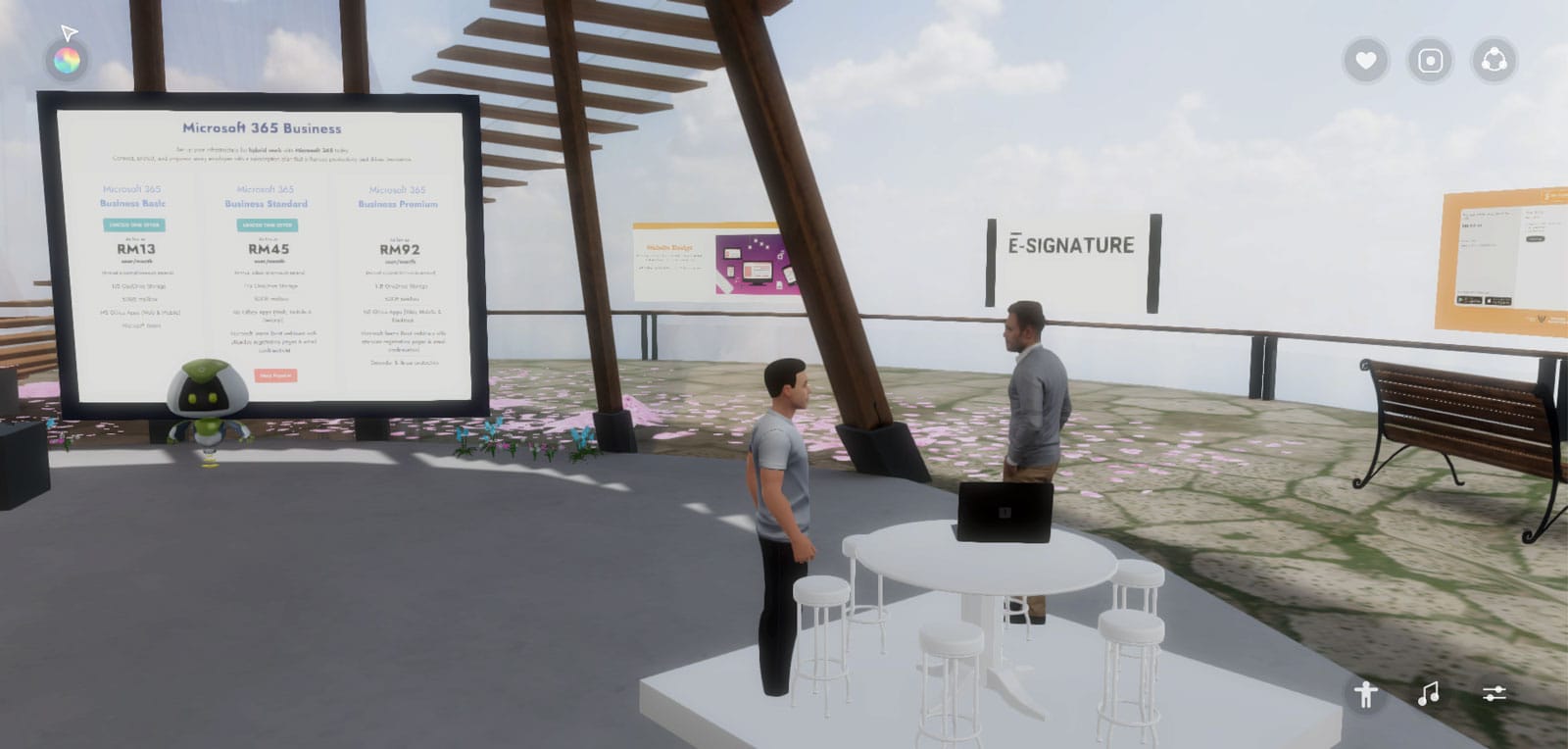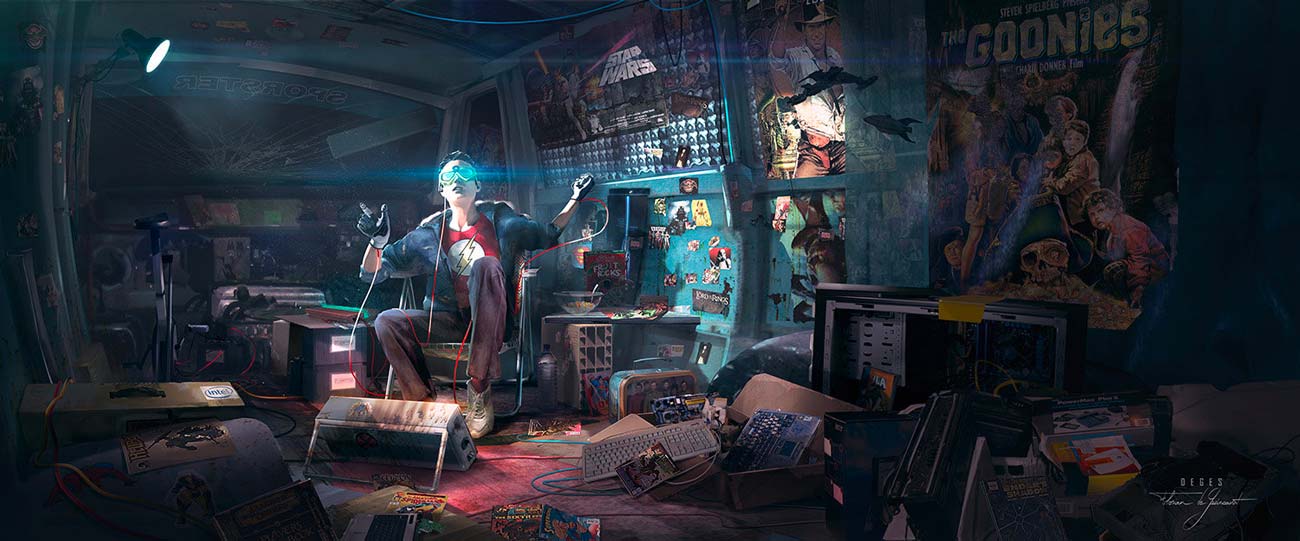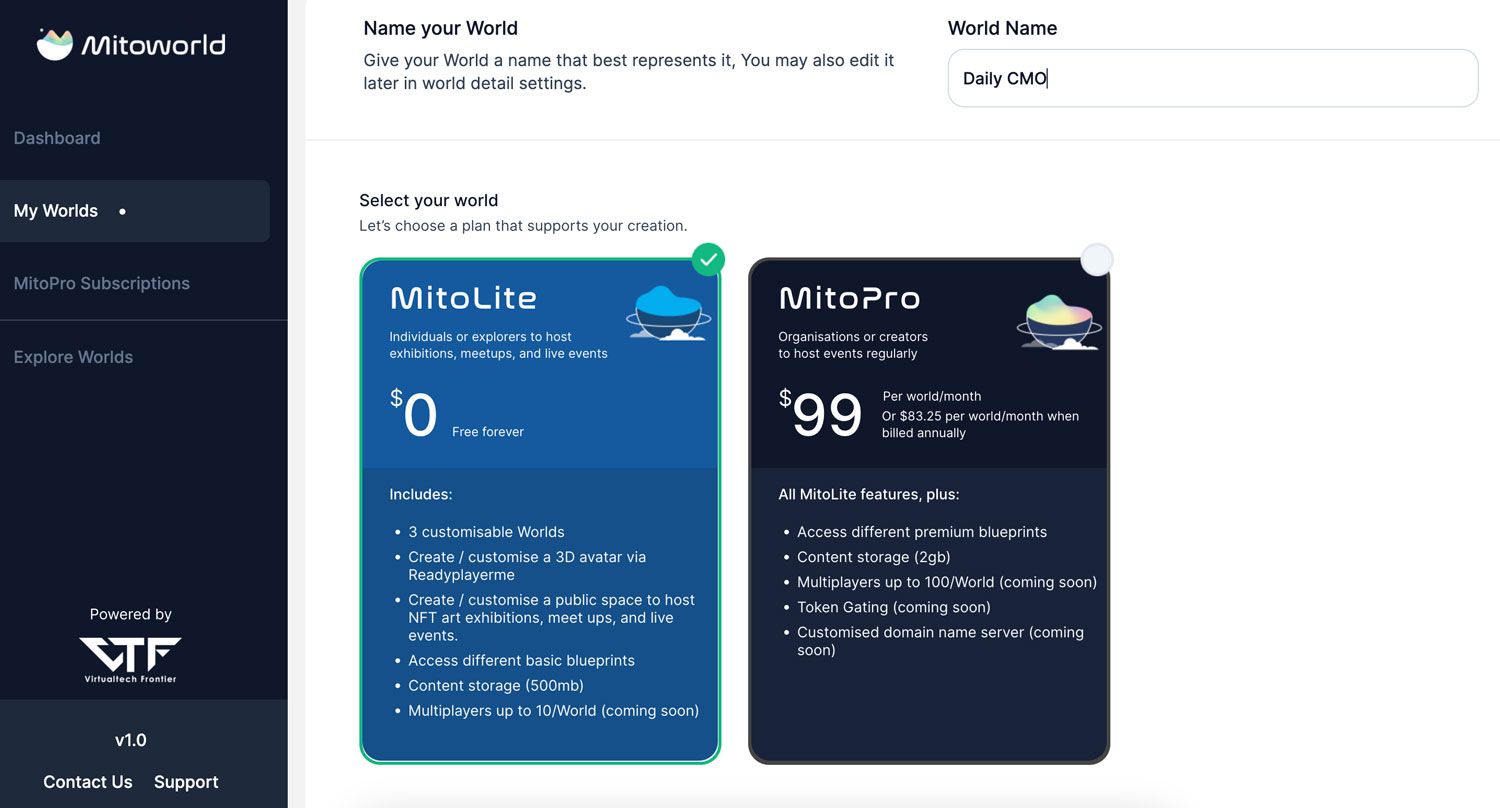What The Heck is The Metaverse? And the opportunity for Malaysian brands.
The Metaverse grew in trend during 2021. Then AI stole its highlight. But is the metaverse here to stay? What does it mean for businesses?

The Metaverse, Web 3.0, and NFTs were the hype in 2021 and 2022.
Then in late 2022, AI technologies like ChatGPT came about. Everyone's focus shifted to generative AI, and how it'll take over jobs. (Yeah, it won't.)
So... is the Metaverse dead?
Far from it. The metaverse is projected to grow into a USD 996 billion market by 2030. That's just another 7 years.
In fact – Mitoworld, a Malaysian home-grown metaverse platform in Malaysia, is going all out to help brands adopt the Metaverse. The best part? You could build your own metaverse for free – using their platform, right now.

What the heck is a Metaverse?
Say the word 'Metaverse' and purplish futuristic images of people wearing VR headsets comes into mind.

"The metaverse is a virtual world – where you can visit different virtual worlds and interact with different people with your avatar (a.k.a the digital version of you)", said Jason, founder of Mitoworld.
Okay... and?
Jason, along with many people believes that the metaverse is an inevitable evolution of the internet.
Imagine a virtual world – like real life, where people around the world live, shop, learn, and interact with each other, all from the comfort of their homes in the physical world.
But for a true metaverse to really work – like in the movie, Ready Player One – it requires interoperability. One that Web 3.0 may offer.

How are AR (Augmented Reality) and VR (Virtual Reality) different?
If you've played Pokemon Go, you have experienced AR.
For AR to work, you need a digital display (usually our phones) to showcase a 3D display in a real-world setting.
On the flip side, VR refers to an immersive alternate reality entirely computer-generated, which you access through VR headsets like the Oculus Rift, Sony Playstation VR, Google Cardboard, etc.
A metaverse is not AR or VR.
The metaverse does not try to augment reality.
Metaverses are software driven. A big benefit is that you can access it through most devices – desktop or mobile phone.
Think of the metaverse as the 'new internet'.
And a VR headset is the hardware used to enhance your interaction in this 'new internet' – similar to how you use a hardware mouse to control your computer.
The rise of the metaverse.
Let’s do a quick throwback to the Covid-19 pandemic.
With no way of doing on-ground activities, brands had to move online. There was an explosion in the number of Facebook lives, Google Meet events, and Zoom webinars.
Well, it got boring - fast.
There's only so much attention you could capture. When every brand started doing the same thing, people started losing interest.
People were interested in what's new.
Enter, the metaverse.
Which at this time, is still something that many people have not experienced.
“Consumers are willing to spend more than 30 minutes in a brand’s metaverse, which is 1000x more than the average time spent on a regular marketing landing page,” Jason said.

With the metaverse, brands can build relationships and engage with their audience, in a never-seen-before method.
The attention economy is here.
Time is a non-renewable resource.
Thousands of social media posts, TikTok videos, and sites are being published every day.
Why would people spend time on your website? Getting even 3 minutes of their attention will be an achievement.
But bring them into a virtual world and add gamification elements – and suddenly, people become excited to engage. Now they spend more than 30 minutes engaging.
The metaverse - with its immersive and interactive 3D virtual space, seems to solve the all-time marketing problem of attention.
Where's the money at?
And what can brands do to leverage the metaverse?
Marketing with the metaverse is so new, that not many brands have done it yet. But people are interested in what's new, not what's better.
So here's your chance.
1. Set up shop in the metaverse.
In the near future, it's likely that people will be spending and flexing their purchases in the metaverse.
The opportunity is to build a digital shopping experience – that is not bounded by physical goods, in the metaverse.
Imagine you're Dior, the luxury brand.
An idea is to build a Dior metaverse, offering in-app digital merchandise that customers can buy and decorate their avatars with. Maybe it's tying up their digital avatars with their physical store purchases.
Just like how everyone wants to own a Dior saddle bag in real life, they might want to replicate the same, virtually.
2. Increase engagement through gamification.
Just like a shopping mall with foot traffic, you're in business if you have enough traffic.
A cool way to drum up traffic is to create a gamification metaverse for your audience to engage and collect rewards on.
The more time your audience spends, the more their affinity grows.
This is great for a brand activation campaign – especially when the goal is to get people to interact with a brand as much as possible.
3. Metaverse as a lead-gen tool.
Every other marketer generates leads by driving prospects to an ol' boring landing page.
You generate leads by driving prospects into a metaverse. Whoa.
Who's going to impress their prospects, capture more attention and leads?
You probably know the answer.
4. Product or space visualization.
Imagine you're a property developer looking to sell a high-scale property.
What if prospects could simulate living in a property, through your metaverse?
Not only that would be useful for prospects, but it would also be a differentiator between you and your competitors.
Your prospects, so impressed by it might even share your metaverse with their friends. Talk about getting your brand metaverse to go viral!
5. Study and learn human behavior.
We're living in the age of data.
To track the behavior of shoppers, physical stores will have to invest in expensive in-store beacons, which most of the time aren't that reliable.
With a digital metaverse?
Now, it's possible to track and study the behavior of your users as they interact on the metaverse.
- What do they engage with?
- Where do they spend the most time at?
- What catches their attention and what loses them?
- What keeps them on the platform?
Effective marketing is about studying our customers – and then creating solutions for them.
How much do Metaverses cost?
Sounds cool so far, but what about the cost of building a metaverse?
- How much does it cost to build a metaverse?
- Will my ROI be justified?
Building a custom metaverse can cost over RM100,000 – depending on the complexity.
This is where no-code metaverse builders like Mitoworld come in.

In the next 5 minutes, you can build your own metaverse for free. And when you're ready to expand your metaverse, the paid plan cost roughly RM5,200 per year (USD99 per month).
That comes down to about RM14 per day – to have your own fully functional, metaverse, accessible by anyone with a web browser on a phone or computer, up and running.
Does my business really need to be in the Metaverse?
Do you really need to have a website? Probably not.
“It’s not about whether or not you need a website. But it’s about what you decide to do with it.” Jason said.
The metaverse is the same.
Here are two reasons why you should probably pay attention.
Use the metaverse as a marketing tool.
The Metaverse is new to most – that it's easy to gain attention with it.
Picture this.
You're a CEO of a fast-growing tech startup. You need to hire a legal firm.
So you go on Google. Every search result seems regular. But then you stumble upon a firm with a metaverse. Out of curiosity, you enter their metaverse and find yourself in a replica of their office. Wait what? You can even talk to an advisor, right in the metaverse? What a forward-thinking law firm, you thought.
You eventually hired them.
The law firm used the metaverse as a marketing tool to attract, engage and earn your trust.
Be an early adopter.
With companies like Meta (Facebook) and Google, investing in the next phase of technology – e.g. Google Starline – the adoption of the metaverse is only going to grow.
Remember how some companies and creators were able to grow quickly by leveraging platforms like YouTube? That's because they were the early adopters.
The early adopters are the risk-takers. But they are also the ones who gain the most if a technology becomes successful.
The question is – are you an early adopter or a laggard?

- Listen to Daily CMO's interview with Jason, founder of Mitoworld on Spotify.
- Build your own metaverse for free on Mitoworld.

